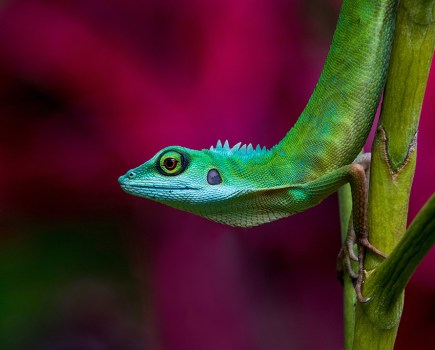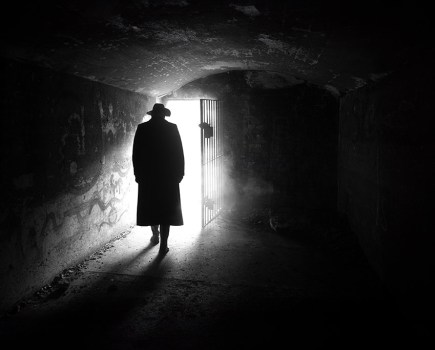APOY 2014 Round 1 – Street Life
Please visit the APOY 2014 home page to find all the rules for entry, terms and conditions, the APOY ENTRY EMAIL ADDRESS, and the disclaimers that must be copied and pasted into an email entry.
Entries must be received by 5pm on 28 March 2014
The theme for round 1 is Street Life. First prize is an Olympus OM-D E-M10 silver kit with 14-42mm EZ Pancake zoom, plus a 45mm f/1.8 portrait, 40-150mm zoom and 9mm fisheye lenses, a macro adapter and a street case. Second prize is an Olympus PEN E-PL5 with a twin-lens zoom kit (14-42mm and 40-150mm). Third prize is an Olympus Stylus SP-100EE Ultra Zoom.
The theme for the opening round of this year’s Amateur Photographer of the Year is Street Life – pictures of people going about their everyday life in the cities, towns and villages where they live.
Street photography is as popular as it ever was and is easily accessible to all photographers. Even if we don’t live in a street alongside other people, we almost certainly travel to, and work in, places where the rich tapestry of street life chugs on like a well-oiled machine. All you have to do is photograph it, and show the rest of the world what happens in that location.
There can be a great temptation to head to the biggest, most bustling place you can, but you don’t need to. Street pictures can be shot as easily beside the quiet and seemingly empty village post office as they can among the maddening crowds that stream past the Bank of England.
This round is about capturing the atmosphere of a place, and to do that a picture needs to show that place and what goes on there. We don’t have to be able to detect where the picture was taken, but we do need to get a feel for what it is like to be there and what sort of people we’d be likely to meet.
 Photo by Damien Demolder
Photo by Damien Demolder
How to enter
Please visit the APOY 2014 home page for information explaining how to enter. Please use your full name as the file name and paste
the disclaimer into the body of your email if you are sending your entry to us
electronically. We also need to know where and how you took your image, plus
the camera and lens used with aperture and focal-length details. Remember to
include a telephone number and your postal address so we can contact you if you
win.
 First Prize
First Prize
The first-prize winner
will receive an Olympus
OM-D E-M10 with a 14-42mm EZ Pancake zoom, a 45mm f/1.8 portrait lens, a
40-150mm zoom, a 9mm fisheye lens, a macro adapter and a street case in which
to carry it all. That’s a total retail price of £1,200. The E-M10 has a
16.1-million-pixel, four thirds-sized CMOS sensor and a TruePic VII image
processing system.
The 1.44-million-dot EVF displays a 100% field of view and
has a 120fps refresh rate. The 14-42mm EZ Pancake zoom lens is the most compact
pancake lens and has a maximum shooting magnification equivalent of 0.45x in
the 35mm format. The 45mm f/1.8 portrait optic is ideal for low-light portrait
work without flash. The 40-150mm zoom has high-speed AF and MSC technology, and the 9mm fisheye lens is ideal for capturing wide angle scenes.
 Second Prize
Second Prize
The second-prize winner
will receive an Olympus PEN
E-PL5 camera plus a 14-42mm and 40-150mm twin-lens zoom kit worth £500. Despite
its small size, the E-PL5 offers serious image quality with its powerful 16.1-million-pixel
sensor and a new OM-D component in the TruePic VI image processor. The camera
has lightning-fast autofocus and a compact design.The camera also boasts a
touch sensitive LCD screen and full HD video.
 Third Prize
Third Prize
The third-prize winner
will receive an Olympus
Stylus SP-100EE Ultra Zoom camera, with an impressive 16-million-pixel sensor
and 3in LCD screen. The camera includes a handy autofocus lock so that you need
never lose a shot due to fuzzy focusing. The camera also features a 50x optical
Ultra Zoom lens with a focal length ranging from 24mm to 1,200mm, and built-in
Dot Sight to make it easier to focus precisely on distant subjects
Somes suggestions from Damien Demolder to help you get started
Why not try…
 Photo by Damien Demolder
Photo by Damien Demolder
Different Angles
About 98% of pictures are taken by a photographer holding a
camera at about head height and giving us all a very ordinary view of the
world. Make your pictures stand out! Shooting from waist-level is a good start,
and for a more dramatic angle you could place the camera close to the ground -
I use the end of my shoe for stability and so the camera doesn’t have to graze
the pavement. Those couple of inches off the deck give enough lift that the
paving doesn’t have to start right in front of the lens.
From low down, people suddenly become taller than the
buildings around them, and we can introduce a mild air of fantasy and wonder,
even though what you have included in the frame is still factually sound.
 Photo by Damien Demolder
Photo by Damien Demolder
Shapes and Lines
Every man-made street structure that we see is made from
lines and shapes, and we should make the most of them to create impact and
excitement in our pictures. Look out for the drama of the edge of a kerb that
darts diagonally across the frame, or the wall of a car park that leads the eye
to the figure coming down the stairs. Look for patterns that get broken, such
as a wall made from a grid of blocks that is disrupted by the spherical form of
a human head passing by. Office blocks are structures waiting to come to life
with the intersection of the edges of the people that inhabit that place.
There’s a whole world of opportunity.
 Photo by Damien Demolder
Photo by Damien Demolder
Interesting Light
It goes without saying that the most successful images will be made with
interesting light. Although light still comes from the sun during the day, the
street photographer is not beholden to the characteristics of the sky to determine
the kind of light on offer. We can travel to places with interesting light, and
find directional light even on an overcast day. Light gets funnelled between
buildings, and through tunnels and under bridges. On a clear day, we get can
use this directional light to highlight our subjects with a powerful orange
beam while keeping the rest of the frame in shadow (particularly when using
exposure compensation). Light can also pass through windows and bounce from
glass to create multi-angled effects. Also remember that long shadows can make
great subjects
Please visit the APOY 2014 home page to find all the rules for entry, terms and conditions, the APOY ENTRY EMAIL ADDRESS, and the disclaimers that must be copied and pasted into an email entry.
Entries must be received by 5pm on 28 March 2014









